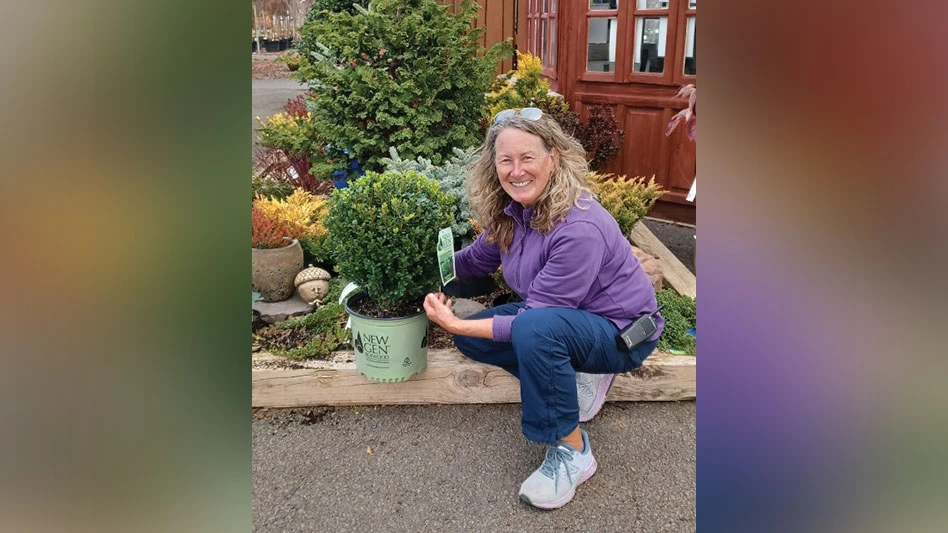This is the third article in a three-part series on hydrangea production that addresses effective use of plant growth regulators. Part one (August 2017) covered mineral nutrition. Part two (September 2017) focused on flowering and bluing of H. macrophylla .

Hydrangeas are the No. 2 selling deciduous flowering shrubs in the U.S. In addition to having them in bloom with the intended floral color for your market, as discussed in the previous two articles in this series, what can make this crop even more profitable is growing it faster. For many shrubs, gone are the days of having a 3-gallon crop in production for more than a season. With larger liners, and refined fertilization and irrigation practices, we are turning crops faster than ever. To keep pace with your competition, consider that plant growth regulators (PGRs) can help increase the number and size of blooms, accelerate bloom time compared to pruning, and can help develop a finished crop while controlling size and quality to aid with requirements for both rack shipping and retail display – all key to shortening your production cycle while maintaining the quality and blooms your customers demand. Pruning
What are PGRs?
PGRs are compounds that can be sprayed, drenched or
While the industry commonly relies on pruning as a way to stimulate branching and control growth, stem removal creates several complications in the production of hydrangeas, as well as other flowering shrubs. For example, pruning can remove tissue containing flower buds and therefore delay flowering, while increasing the time needed after pruning for plants to regain a natural appearance. An additional complication is that pruning does not always stimulate branching. Sometimes a branch is pruned and a single branch replaces it – there is no increase in branch number. Numerous studies with hydrangea at the University of Tennessee, Knoxville have shown a pruning response similar to water sprayed “controls,” nontreated plants. In comparison, some PGRs cause a two- to three-times increase in branching and flowering on
Success with PGRs
Using PGRs is not without its own challenges. Preparing and applying PGRs is not a task for new or otherwise inexperienced employees. It is critical to measure PGRs accurately. Some PGRs are highly concentrated and ¼ teaspoon too much or too little can make a difference in plant response. Needle-less syringes create the ability to accurately measure to the milliliter and are far superior to kitchen measuring spoons.
In addition to accurately measuring and mixing the product, growers must apply PGRs accurately and consistently. Knowing whether the PGR or combination of PGRs you have tank mixed have root, shoot, or leaf activity is critical. This affects the dose.
Some experts, including perennial flower PGR guru, Dr. Joyce Latimer at Virginia Tech, advocate making a couple, lower-dose applications versus a single more concentrated application. This allows for mistakes in mixing and reapplication, if conditions warrant it, whereas once a strongly mixed or heavy volume application is made, a crop may never recover or may not recover within a marketable window.
Generally, overall growth is slower following PGR application, so time applications when growth is about to occur, and definitely before plants are larger than desired for the application to have the maximum benefit. PGRs can’t make a plant smaller than it already is.
Plant species, crop stage, intended outcome, and time to sale dictate the type of PGR and the appropriate rate, while mixing and application (accurately diluting, uniformly spraying each plant in a crop), as well as environmental conditions during and following application influence PGR activity. Conditions that allow the leaf to remain wet with the product for a long duration following application, as opposed to those that cause it to evaporate quickly, will maximize absorption. Irrigation may need to be delayed following application of certain PGRs to protect absorption and activity. Likewise, if your nursery has locations in multiple areas, a rate that works for your more northern location may need to be applied more than once a season at your more southern location. In 2015, a relatively mild growing season, there were about five flowers per 3-gallon H.

Considerations
Use of PGRs, like pesticides, involves some risk. For example, daminozide is considered a potential human carcinogen by the U.S. Environmental Protection Agency. Experienced,
Labels and availability of plant growth regulators change periodically based on patents and volume of use by growers. For example,


PGR recommendations for container-grown hydrangeas
Branch number of H. paniculata ‘Limelight’ or Little Lime in 3-gal containers
H.
To control
Care should be taken when using PGRs as residual effects, called habituation, can occur on florist and landscape hydrangeas the following season. Doug Bailey and Bernadette Clark, while at North Carolina State University, found that summer PGR applications the year before spring forcing had reduced flower size and plant height of H.
While PGRs are routinely applied in the production of florist hydrangeas, results can vary and, yet, pruning may not be a better solution, especially where flower development is affected. Applications of
PGRS can help increase the number and size of blooms, accelerate bloom time compared to pruning, and can help develop a finished crop while controlling size and quality.

Irrigation: the original PGR
Available water in the substrate and subsequent plant water stress influence plant growth; thus, growers can control plant growth by managing water effectively. Too little water and plants are stunted, undersized, and unsaleable. Too much water and plants are lanky, require pruning and may flop during shipping. By managing irrigation to approach water stress but not allow the substrate to get too dry, growers can produce a compact plant that finishes on schedule. Nurseries using this strategy have reported no negative effects on flowering. This is accomplished with greatest success in controlled environments, such as a greenhouse, when producing or forcing hydrangeas; however, this management tool can also be successfully accomplished in outdoor production. Producing compact plants with less pruning or no PGRs can be accomplished at your nursery by irrigation scheduling, including use of new technologies such as substrate moisture sensors to “grow dry.”
Dr. Marc van Iersel of the University of Georgia, achieved growth control of H. macrophylla ‘Lady in Red’ by growing compact, saleable plants at 14 percent substrate water content (a relatively low moisture level which may not be suitable for other crops or other substrates). More recently, Amy Fulcher of the University of Tennessee, in collaboration with Holden Nursery, produced H. quercifolia ‘Snow Queen’ oakleaf hydrangea using an automated leachate-based irrigation system in which water leaching from the bottom of the container was monitored and used to dictate irrigation runtime, targeting a 15 percent leaching fraction. This method ensures plants receive the appropriate water volume each day without overwatering. Plant growth was controlled and plant quality met or exceeded the nursery standard without the use of PGRs. Dr. Fulcher’s lab also grew ‘Alice’ oakleaf hydrangea using either a daily water replacement irrigation schedule (replacing water lost from evapotranspiration each day) or an on-demand irrigation schedule (irrigating when the container dried to a predetermined water content monitored by sensors). Both systems adequately controlled growth and reduced water use ~60 percent without the use of PGRs. Researchers led by Tom Fernandez at Michigan State University used partial daily water replacement by replacing 100 percent of daily water used on day one, but only 75 percent on days two and three to produce H. paniculata ‘Limelight’ without use of PGRs. When compared to conventional production practices, these instances used less water and labor while improving resource use efficiency. That is smart growing. Jim Owen and former graduate student Jeb Fields of Virginia Tech, found that incorporating sphagnum peat moss or coir into pine bark increased the available water found at low water contents (the water buffering capacity) compared to 100 percent pine bark, providing insurance the plant will not undergo detrimental water stress when “growing dry.” These substrate amendments make available water easier to obtain for roots during the driest period between irrigation events, thus growers can grow plants drier without the crop experiencing a severe water stress. They produced marketable, more compact plants of H. arborescens ‘Annabelle’ grown in substrates containing peat or coir compared to plants in unamended pine bark grown at the same low water content.
Hydrangeas are beautiful landscape plants that hold lasting memories across many generations. Use this three-part series to provide correct nutrients in a timely fashion during production; create many large flowers in the desired colors; and manage growth using either PGRs, irrigation, or both to produce marketable plants at the time of sale.

Explore the October 2017 Issue
Check out more from this issue and find your next story to read.
Latest from Nursery Management
- The Growth Industry Episode 3: Across the Pond with Neville Stein
- What's in a name?
- How impending tariffs and USDA layoffs impact the horticulture industry
- Shifting the urban environment
- These companies are utilizing plastic alternatives to reduce horticultural waste
- How to create a sustainable plant nursery
- Lamiastrum galeobdolon ‘Herman’s Pride’
- One of rarest plants on earth: Tahina spectabilis





